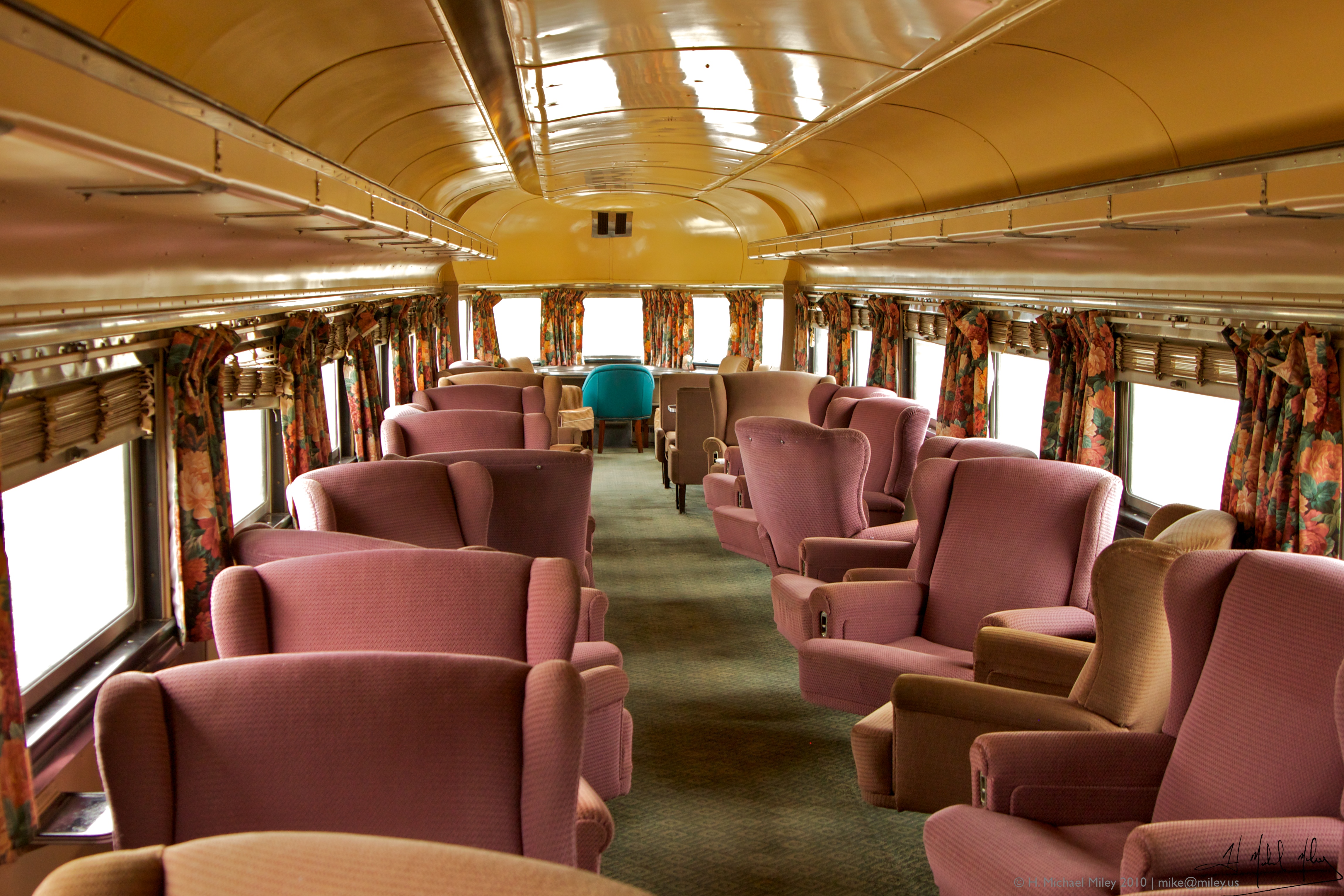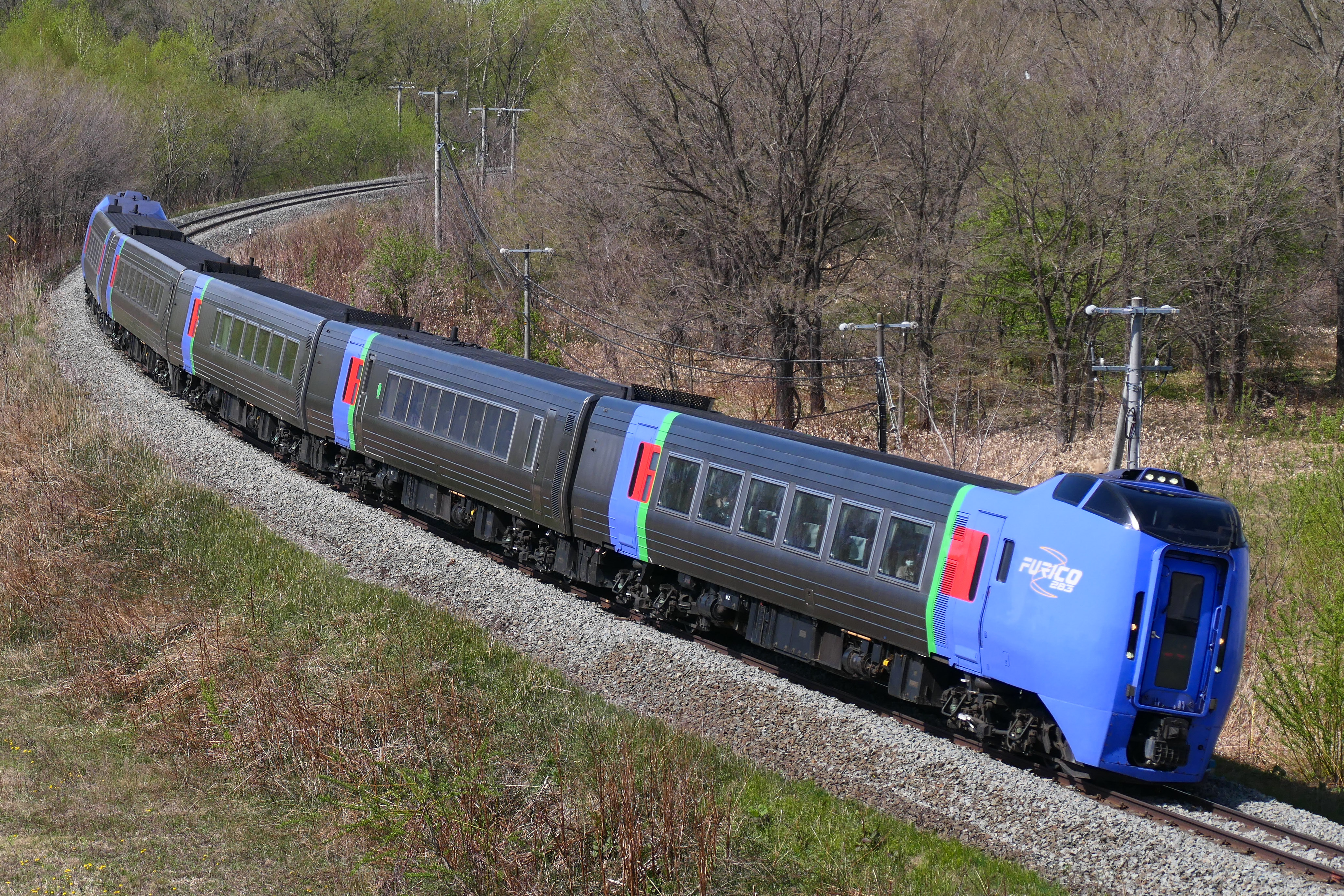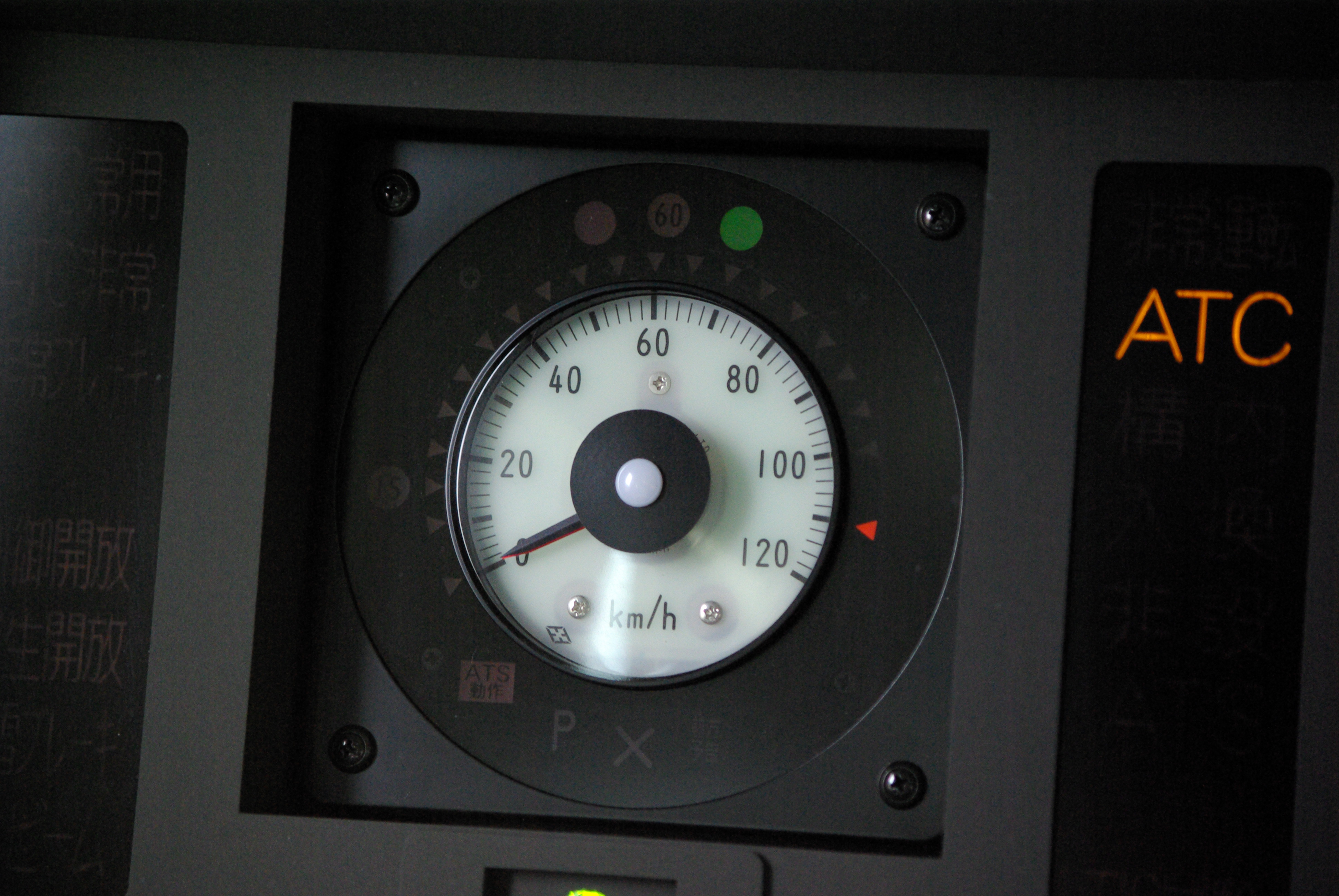|
SJ X2
X 2000, also called SJ X2 or simply as X2, is an electric tilting train operated by SJ in Sweden. It was constructed by Kalmar Verkstad in Kalmar, Sweden (prior to the company being bought by Adtranz in 1996) and launched in 1990 as a first-class only train with a meal included in the ticket price, and free use of the train's fax machine. There is a bistro on board that serves snack bar-style dishes. From 1995 second class was introduced. All trains are equipped with Wi-Fi for passenger access to the Internet and were repainted grey as of 2005. The trains also have electric power supply sockets at all seats in both first and second class. The trains have been fitted with repeaters to improve mobile phone reception. It has a top commercial speed of , but has reached in a test. The reason the X2 was chosen was that Sweden (like most other countries) has very curved railways, and not enough traffic to justify building special high-speed railway lines (at least before 1990 ... [...More Info...] [...Related Items...] OR: [Wikipedia] [Google] [Baidu] |
Stockholm Central Station
Stockholm Central Station ( sv, Stockholms centralstation) is a railway station in Stockholm, Sweden. It is situated in the district of Norrmalm at Vasagatan/Central Plan. The station opened on 18 July 1871 and it had over 200,000 visitors daily, of which about 170,000 were travellers (105,000 with commuter trains, 25,000 with Arlanda Express and 40,000 with other trains), until 10 July 2017 when the local commuter trains started to call at the Stockholm City Station which is located under the central station. In front of the central station stands a statue of Nils Ericson. History The station was built between 1867 and 1871 with Adolf W. Edelsvärd as the architect. Until 1925 the tracks led into the station but during a renovation 1925-1927 the tracks were moved to the west and the former track hall was converted into a 119 meter long, 28 meter wide and 13 meter high waiting hall. During the renovation the station was extended to the south through the construction of t ... [...More Info...] [...Related Items...] OR: [Wikipedia] [Google] [Baidu] |
Overhead Line
An overhead line or overhead wire is an electrical cable that is used to transmit electrical energy to electric locomotives, trolleybuses or trams. It is known variously as: * Overhead catenary * Overhead contact system (OCS) * Overhead equipment (OHE) * Overhead line equipment (OLE or OHLE) * Overhead lines (OHL) * Overhead wiring (OHW) * Traction wire * Trolley wire This article follows the International Union of Railways in using the generic term ''overhead line''. An overhead line consists of one or more wires (or rails, particularly in tunnels) situated over rail tracks, raised to a high electrical potential by connection to feeder stations at regular intervals. The feeder stations are usually fed from a high-voltage electrical grid. Overview Electric trains that collect their current from overhead lines use a device such as a pantograph, bow collector or trolley pole. It presses against the underside of the lowest overhead wire, the contact wire. Current collectors ar ... [...More Info...] [...Related Items...] OR: [Wikipedia] [Google] [Baidu] |
First Class Travel
First class is the most luxurious and most expensive travel class of seats and service on a train, passenger ship, airplane, bus, or other system of transport. Compared to business class and economy class, it offers the best service and most comfortable accommodation. Aviation The First class (aviation), first-class section of a fixed-wing jet airliner is typically toward the front of the aircraft. Many airlines have removed first class altogether from their international flights, offering business class as their highest level of international service. First class passengers are usually allowed into Airport lounge, lounges at airports while they wait for their flights. Railways While first-class travel accommodation is common in intercity public transport rail services, they have become increasingly prevalent for commuters' short-distance daily travel, especially in rapid transit contexts, rather than longer-distance regional rail. Australia Australia has internal rail opera ... [...More Info...] [...Related Items...] OR: [Wikipedia] [Google] [Baidu] |
Tilting Train
A tilting train is a train that has a mechanism enabling increased speed on regular rail tracks. As a train (or other vehicle) rounds a curve at speed, objects inside the train experience centrifugal force. This can cause packages to slide about or seated passengers to feel squashed by the outboard armrest, and standing passengers to lose their balance. Tilting trains are designed to counteract this by tilting the carriages towards the inside of the curve, thus compensating for the g-force. The train may be constructed such that inertial forces cause the tilting (''passive tilt''), or it may have a computer-controlled powered mechanism (''active tilt''). The first passive tilting car design was built in the US in 1937, and an improved version was built in 1939. The beginning of World War II ended development. Talgo introduced a version based on their articulated bogie design in 1950s, and this concept was used on a number of commercial services. Among these was the UAC Turbo ... [...More Info...] [...Related Items...] OR: [Wikipedia] [Google] [Baidu] |
Electric Multiple Unit
An electric multiple unit or EMU is a multiple-unit train consisting of self-propelled carriages using electricity as the motive power. An EMU requires no separate locomotive, as electric traction motors are incorporated within one or a number of the carriages. An EMU is usually formed of two or more semi-permanently coupled carriages, but electrically powered single-unit railcars are also generally classed as EMUs. The great majority of EMUs are passenger trains, but versions also exist for carrying mail. EMUs are popular on commuter and suburban rail networks around the world due to their fast acceleration and pollution-free operation. Being quieter than diesel multiple units (DMUs) and locomotive-hauled trains, EMUs can operate later at night and more frequently without disturbing nearby residents. In addition, tunnel design for EMU trains is simpler as no provision is needed for exhausting fumes, although retrofitting existing limited-clearance tunnels to accommodate the ... [...More Info...] [...Related Items...] OR: [Wikipedia] [Google] [Baidu] |
ZUB 123
The ZUB 1xx system is a family of train protection systems produced by Siemens. Its ZUB balises were deployed in the ZUB 121 train protection system in the Swiss railway network, in the ZUB 122 tilting control system in the German railway network, and in the ZUB 123 train protection system in the Danish railway network. Some of these were adapted for other railway lines before the next generation ZUB 2xx family was introduced which is based on Eurobalises - the earlier ZUB balises are not compatible with those. History The German LZB was created in 1965 and it was deployed on high-speed lines throughout the 1970s. However, with its signal wire along the complete length of a track it was considered too expensive in order to replace the traditional PZB inductive train stops that have been put along with line-side signals. In the 1980s the manufacturers of railway signaling systems developed electronic versions that could be deployed in the same pattern as the traditional train s ... [...More Info...] [...Related Items...] OR: [Wikipedia] [Google] [Baidu] |
Automatic Train Control
Automatic train control (ATC) is a general class of train protection systems for railways that involves a speed control mechanism in response to external inputs. For example, a system could effect an emergency brake application if the driver does not react to a signal at danger. ATC systems tend to integrate various cab signalling technologies and they use more granular deceleration patterns in lieu of the rigid stops encountered with the older automatic train stop (ATS) technology. ATC can also be used with automatic train operation (ATO) and is usually considered to be the safety-critical part of a railway system. Over time, there have been many different safety systems labelled as "automatic train control". The first experimental apparatus was installed on the Henley branch line in January 1906 by the Great Western Railway, although it would now be referred to as an automatic warning system (AWS) because the driver retained full command of braking. The term is especially co ... [...More Info...] [...Related Items...] OR: [Wikipedia] [Google] [Baidu] |
Track Brake
A magnetic track brake (Mg brake) is a brake for rail vehicles. It consists of brake magnets, pole shoes, a suspension, a power transmission and, in the case of mainline railroads, a track rod. When current flows through the magnet coil, the magnet is attracted to the rail, which presses the pole shoes against the rail, thereby decelerating the vehicle. While brakes such as disc brakes or shoe brakes depend on the frictional connection between wheel and rail, the magnetic track brake acts directly on the rail. Therefore, its brake effect is not limited by wheel-rail contact. Thus, environmental factors such as wetness or contamination of the rail have less influence on the brake force. Usage Magnetic track brakes are used on rail vehicles in addition to the primary, wheel-effective brake systems. As an additional brake system, they help to ensure that the prescribed brake distances of rail vehicles can be complied with. Since magnetic track brakes always act unregulated and ... [...More Info...] [...Related Items...] OR: [Wikipedia] [Google] [Baidu] |
Slippery Rail
Slippery rail, or low railhead adhesion, is a condition of railways (railroads) where contamination of the railhead reduces the traction between the wheel and the rail. This can lead to wheelslip when the train is taking power, and wheelslide when the train is braking. One common cause of contamination is fallen leaves that adhere to the railhead (top surface) of railway tracks. The condition results in significant reduction in friction between train wheels and rails, and in extreme cases can render the track temporarily unusable. In Britain, the situation is colloquially referred to as "leaves on the line". Low adhesion caused by weather Railhead contamination caused by weather conditions can occur at any time of year. The leaf fall season causes the most disruption to rail operations. In heavily deciduous forested areas like the American Mid-Atlantic states, New England, many parts of Europe including the UK, and Southern Ontario, Canada, the problem can arise. Where the l ... [...More Info...] [...Related Items...] OR: [Wikipedia] [Google] [Baidu] |
Regenerative Brake
Regenerative braking is an energy recovery mechanism that slows down a moving vehicle or object by converting its kinetic energy into a form that can be either used immediately or stored until needed. In this mechanism, the electric traction motor uses the vehicle's momentum to recover energy that would otherwise be lost to the brake discs as heat. This method contrasts with conventional braking systems. In those systems, the excess kinetic energy is converted to unwanted and wasted heat due to friction in the brakes, or with rheostatic brakes, where the energy is recovered by using electric motors as generators but is immediately dissipated as heat in resistors. In addition to improving the overall efficiency of the vehicle, regeneration can significantly extend the life of the braking system as the mechanical parts will not wear out quickly. General principle The most common form of regenerative brake involves an electric motor functioning as an electric generator. In elect ... [...More Info...] [...Related Items...] OR: [Wikipedia] [Google] [Baidu] |
Railway Airbrake
A railway air brake is a railway brake power braking system with compressed air as the operating medium. Modern trains rely upon a fail-safe air brake system that is based upon a design patented by George Westinghouse on April 13, 1869. The Westinghouse Air Brake Company was subsequently organized to manufacture and sell Westinghouse's invention. In various forms, it has been nearly universally adopted. The Westinghouse system uses air pressure to charge air reservoirs (tanks) on each car. Full air pressure causes each car to release the brakes. A subsequent reduction or loss of air pressure causes each car to apply its brakes, using the compressed air stored in its reservoirs. Overview Straight air brake In the air brake's simplest form, called the ''straight air system'', compressed air pushes on a piston in a cylinder. The piston is connected through mechanical linkage to brake shoes that can rub on the train wheels, using the resulting friction to slow the train. The ... [...More Info...] [...Related Items...] OR: [Wikipedia] [Google] [Baidu] |
Rim (wheel)
The rim is the "outer edge of a wheel, holding the tire". It makes up the outer circular design of the wheel on which the inside edge of the tire is mounted on vehicles such as automobiles. For example, on a bicycle wheel the rim is a large hoop attached to the outer ends of the spokes of the wheel that holds the tire and tube. In cross-section, the rim is deep in the center and shallow at the outer edges, thus forming a "U" shape that supports the bead of the tire casing. In the 1st millennium BC, an iron rim was introduced around the wooden wheels of chariots to improve longevity on rough surfaces. Characteristics ;Design: The first pneumatic tires for bicycles were simple tubes in shape secured to the wooden outer concave surfaced circumference of the wheel by glue and air pressure pressing them against it. The surface for receiving the tube was not very secure thus causing the tires to sometimes come off the rims. Bicycle manufacturer and inventor Thomas B. Jeffery deve ... [...More Info...] [...Related Items...] OR: [Wikipedia] [Google] [Baidu] |


.jpg)







